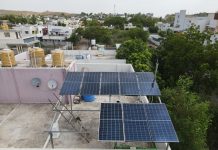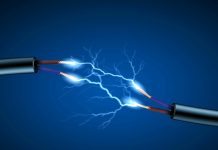Solar panels are getting popular and have been widely installed for residential as well as commercial utilities. However, as there are no specific criteria for where they can be installed, you might find certain discrepancies in their installations.
Earlier, with little awareness, specific errors like placing the panels in the shade or not maintaining the proper inclination of the panels were blatantly repeated.
But, now, with considerable popularity and technical awareness, these errors are not found any more in solar rooftop system installations.
However, there are certain mistakes that need to be addressed immediately as many are unaware of them being mistakes.
Let’s begin!
Placing the Inverter in Sunlight
Invertor placed under the sun can harm the product. If your invertor faces the sun directly, it can heat its components, so it is not good to have your solar inverter in sunlight. Always give up the canopy or place it under the shade or indoors if required and possible.
Placing the Inverter without a Proper Ventilation
Before we start, let’s understand the basic concept behind Heating and cooling. An inverter is equipped with active cooling and passive cooling. Now when we say active cooling, there is a fan provided for the inverter; when I say passive cooling, there is only the heat sink behind the inverter.
Dissipating the heat now, if your inverter is going to be placed adjacent to the wall without any space for ventilation, then the inverter will not be appropriately placed by the heat sink and the fan.
Therefore it’s always better to have proper ventilation for the inverter. Placing things On top of the inverter is not advisable because the heat sink may not have enough space to breathe out that hot air.
Placing the Inverter on an Unstable Surface
Many times according to the residence type and available resources, the inverter might not be placed with a stable and firm supporting stand. Usually, we can see the inverter is placed on a wall or a stand that is not strong enough to withstand the weight of the inverter.
Besides, the inverter might sometimes shiver as a part of its functioning. Hence, the ideal support should be flat, broader, and firm enough to hold the inverter.
Coiling the Extra Cables
Many of us tend to keep stuff stored in our house, thinking it might be needed in the future. The same goes with the solar cables that are used to pass the current between the solar panels and the residence. A standard length of cables is provided with every rooftop solar installation. The cables might get long or short depending on the house size and usability. The rooftop solar companies in India provide an extra cable to match the length during the installation. But what if the length of the provided cable is too long? Technically, the extra left cable should be cut out. But that’s not what happens many times. As mentioned above, many of us coil this extra cable connected to the installed solar system and leave it alongside the solar for probable future usage.
This coiled cable is a current-carrying conductor and is not recommended to be coiled and stored this way. Instead, cut them out and keep them in a safer place somewhere else for the supposed future use.
Using Multi-Inputs of an Inverter Unnecessarily
It is not necessary to cover all the inputs of an inverter. Inverters can handle a specific peak power. However, nowadays, the panels can generate more than this peak power, which is why it is not necessary to use all the inputs.
When you try to cover up all the inputs or use all the inputs, then you are reducing the number of modules in a string. You are reducing the string voltage, which is ultimately responsible for bringing down the starting time of the inverter. As a result, the inverter does not get its minimum startup voltage quickly.
Now, for instance, as years pass, this string with fewer modules will degrade, thus bringing down the voltage, which might not be suitable for the inverter to work at its best efficiency.
Hence so, do not try to cover all the inputs or do not try to use all the inputs that are not required. Instead, use as few inputs as possible while getting as many panels as possible. However, stay within the limits of the voltage and current of the inverter.
Conclusion
Solar panel installation is an essential step if you wish to utilize solar power for decades without any repairs and maintenance issues. The more care you take during installation, the more you can be relaxed in the coming years. Therefore, it is recommended to ensure all the due care is taken right at the time of solar installation.



























